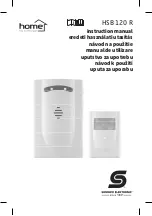
5
NOTE: Because of the several factors involved (injector,
nozzle size, gas pressures) the adjustment procedures
given above do not apply in all situations. However,
this is a good rule-of-thumb if you want preheat
flames at maximum effectiveness. You should usu-
ally be able to keep one preheat valve wide open if
regulator oxygen pressure has been set correctly for
the nozzle in use.
SHUTTING OFF
Release the cutting oxygen valve lever. Then close the fuel
gas valve, and finally the preheat oxygen valve.
If operations are to be stopped for half-hour or more, all
pressure should be released from the torch, hoses, and
regulators by doing the following:
1. Close each cylinder or station valve.
2. Open torch valves.
3. After relieving the gases, back out the pressure-adjust-
ing screw of each regulator and close the torch valves.
OPERATING PRECAUTIONS
Backfire:
Improper operation of the torch may cause the
flames to go out with a loud “pop”. Such a backfire may be
caused by contact of nozzle with the work, by spatter from
the work, by the use of incorrect gas pressures, or by leak-
age at the cutting nozzle seats due to dirt or nicks on seats
or to a loose nozzle nut.
Flashback:
Under certain circumstances, the flame may not
“pop” out (backfire) but instead burn back inside the torch
with a shrill hissing or squeal. This is called a “flashback”. A
flashback should never occur if (1) the equipment is in good
condition; (2) preheat ports on cutting nozzles or welding
tips are cleaned frequently; (3) operating pressures are cor-
rect; and (4) throttle valves are adjusted properly. Should a
flashback occur, IMMEDIATELY shut off the torch. Allow it to
cool off for at least a minute. Then check your nozzle or tip,
gas pressure, readjust regulators if necessary, and relight the
torch. If flashback recurs, send the torch to your distributor
or to ESAB Remanufacturing Center, 411 S. Ebenezer Road,
Florence, SC 29501 for repair.
TESTING FOR LEAKS
Every cutting outfit should be thoroughly tested for leaks
after it is first hooked up, and at regular intervals thereafter.
After all connections have been made, make sure all valves
on the torch handle are closed. Then adjust regulators, or
open station valves, to apply 60 psi oxygen pressure and
up to 10 psi fuel gas pressure on the hoses.
Using Leak Test Solution (P/N 998771), or any other solu-
tion suitable for oxygen service, check for leaks at the
cylinder valves, the cylinder-to-regulator connections, the
regulator-to-hose connections, and the hose-to-torch con-
nections. If bubbling at any point indicates leakage, tighten
the connection. If this does not stop the leakage, close the
appropriate cylinder valve, open the corresponding torch
valve to remove all pressure from the line, and finally re-
lease the regulator pressure-adjusting screw by turning it
counterclockwise; then break the leaky connection, wipe
metal seating surfaces with a clean dry cloth, and examine
them for nicks and scratches. Remake the connection(s) and
retest. Do not try to light the torch until you are satisfied
that all connections are gas-tight.
After lighting the torch and adjusting the flames, use leak
test solution to check for leakage at all torch valves and at
the nozzle nut.
LIGHTING AND FLAME ADJUSTMENT
1. Open the preheat oxygen valve on the torch about 1/8
turn.
2. Open the fuel gas valve on the torch about 1/8 turn and
light the gas at the nozzle with a friction lighter. DO NOT
USE A MATCH. Use of a match can seriously burn your
hand.
3. If using acetylene, open fuel gas valve until preheat
flames leave the end of the nozzle and then close just
enough to return the flames to the nozzle. Depress
lever to open cutting oxygen valve and then readjust
preheat flames to neutral by opening preheat oxygen
valve gradually. If using FG-2 or other fuel gases but
acetylene, open fuel gas valve until flames just starts
to leave the end of the nozzle and then open the pre-
heat oxygen valve until the flames are at their shortest
length. Depress the cutting oxygen valve lever and then
readjust the preheat flames to the shortest length by
opening the preheat oxygen valve gradually. The above
procedure usually provides adequate preheat or the
nozzle in use. If desiring to change the preheat flames,
always hold the cutting oxygen valve open while read-
justing the preheat oxygen and fuel gas valves.
Summary of Contents for SCT-1500 SERIES
Page 4: ...4 ...
Page 12: ...12 ...
Page 20: ...20 ...
Page 25: ...25 NOTES ...
Page 26: ...26 NOTES ...
Page 27: ...27 NOTES ...






































